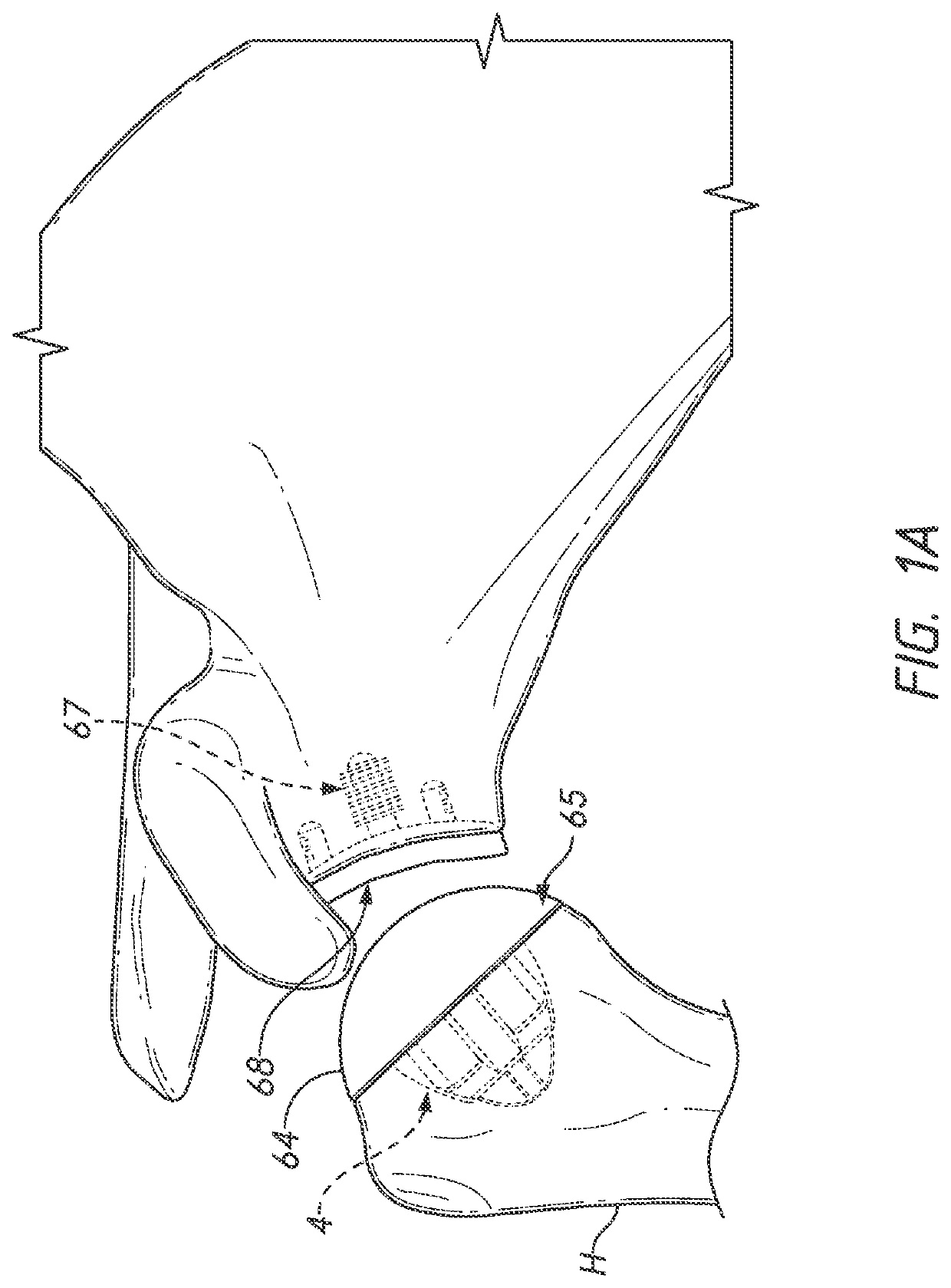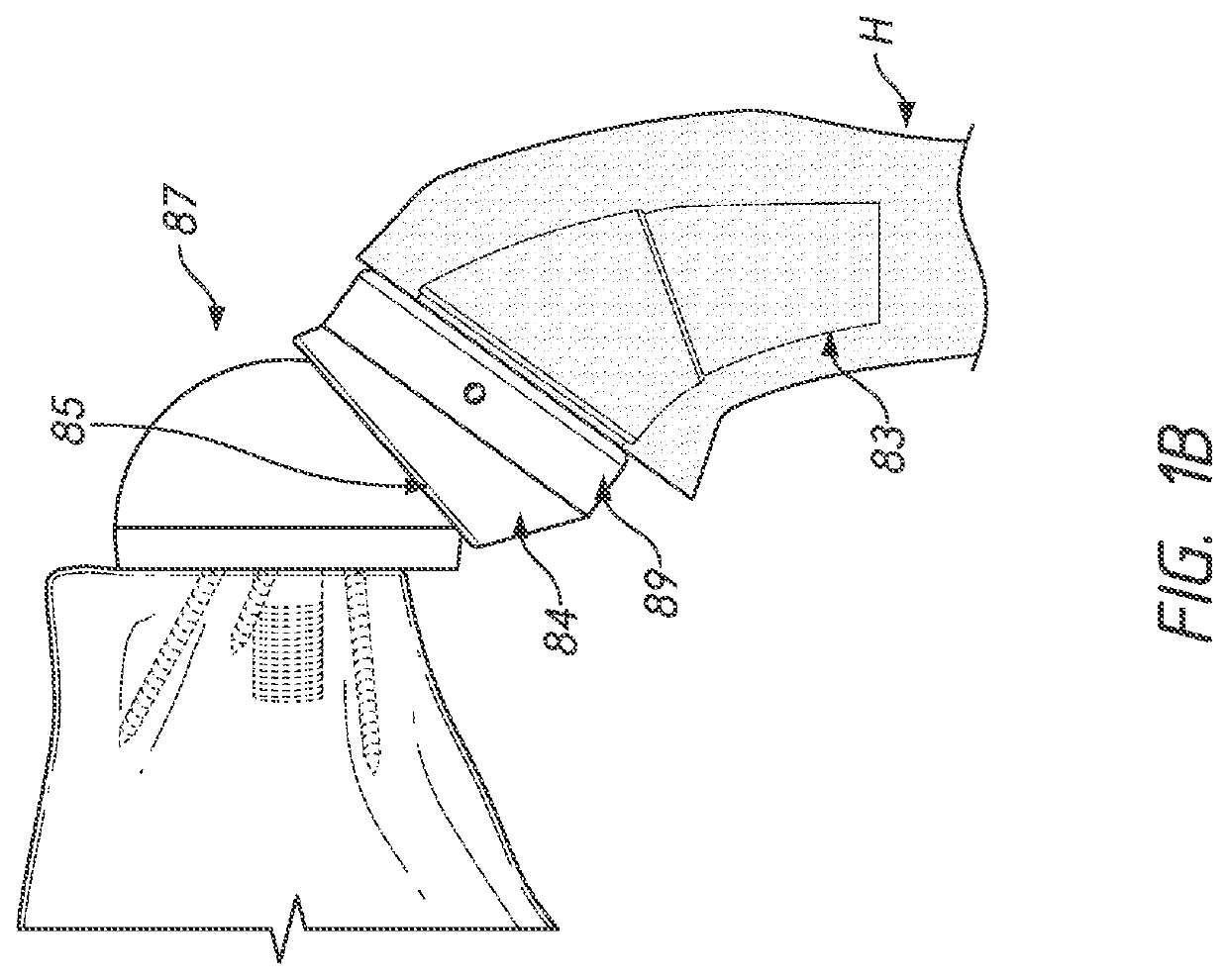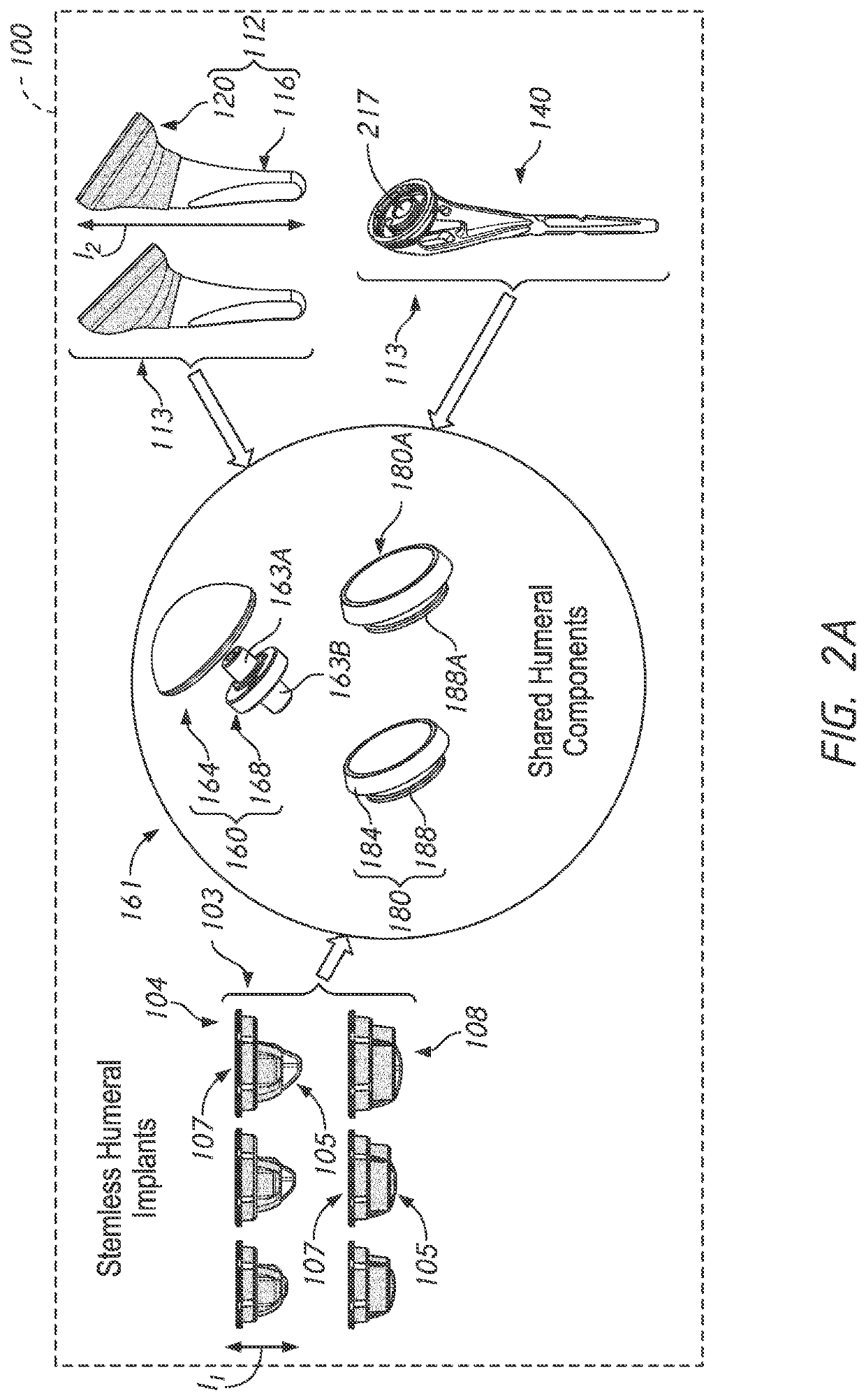Shoulder prosthesis components and assemblies
a technology for shoulder prostheses and components, applied in the field of shoulder prostheses, can solve the problems of excessive patient bone loss, disassembly or breakage of the construction, etc., and achieve the effect of flexible working
- Summary
- Abstract
- Description
- Claims
- Application Information
AI Technical Summary
Benefits of technology
Problems solved by technology
Method used
Image
Examples
Embodiment Construction
[0093]FIGS. 1A and 1B show two conventional approaches to total shoulder arthroplasty. FIG. 1A shows an anatomic approach in which the humeral head is replaced with an articular body 64 having an convex articular surface 65. The glenoid of the scapula can be modified with an implant 67 providing a concave surface 68 for articulation of the humeral articular body 64 The humeral articular body 64 is secured to the humerus H using a stemless anchor 4 that is dedicated for and only compatible with the anatomic articular body 64.
[0094]FIG. 1B shows a reverse approach in which the humerus H is fitted with an articular body 84 having a concave articular surface 85. The glenoid region of the scapula is fitted with a spherical articular body, commonly called a glenosphere 87. In this case, the concave articular surface 85 placed on the humerus articulates of the glenosphere 87, which is fixed relative to the scapula. The reverse articular body 84 is mounted to a tray 88 that is disposed betw...
PUM
 Login to View More
Login to View More Abstract
Description
Claims
Application Information
 Login to View More
Login to View More - R&D
- Intellectual Property
- Life Sciences
- Materials
- Tech Scout
- Unparalleled Data Quality
- Higher Quality Content
- 60% Fewer Hallucinations
Browse by: Latest US Patents, China's latest patents, Technical Efficacy Thesaurus, Application Domain, Technology Topic, Popular Technical Reports.
© 2025 PatSnap. All rights reserved.Legal|Privacy policy|Modern Slavery Act Transparency Statement|Sitemap|About US| Contact US: help@patsnap.com



